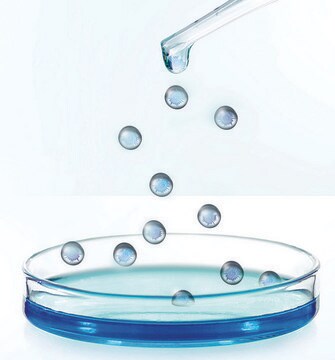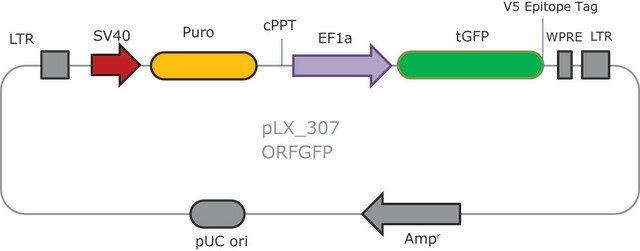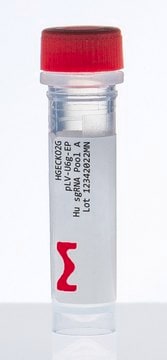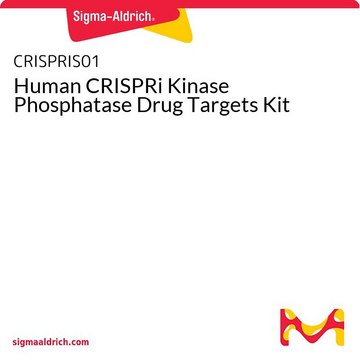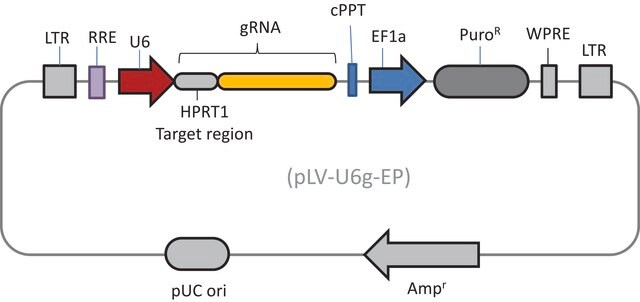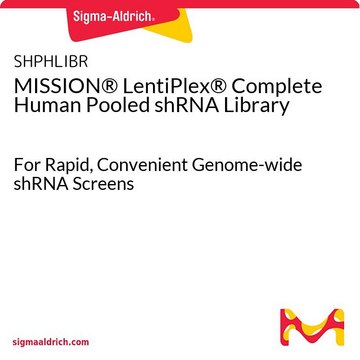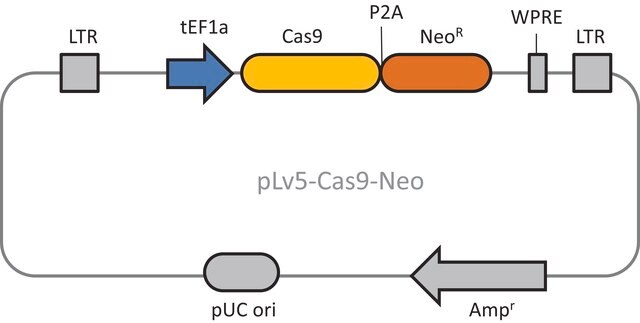HWGCRISPR
Sigma Whole Human Genome Lentiviral CRISPR Pool
About This Item
Productos recomendados
packaging
pkg of 8x25 μL (vials)
Quality Level
concentration
5x108 VP/ml (via p24 assay)
application(s)
CRISPR
shipped in
dry ice
storage temp.
−70°C
General description
Application
Biochem/physiol Actions
Features and Benefits
- Use CRISPR nucleases to knockout protein-coding genes to assess their function
- Efficiently screen the whole human genome (16,000+ genes) at the bench-top without robotics or specialized equipment
- Increased flexibility consisting of 8 subpools at 23,000 clones per pool (184,000 clones total), from the previous 2 subpools (Gecko v2)
- Expanded gRNA coverage at 10 gRNAs per gene, from the previous 6 gRNAs per gene (Gecko v2)
- Numerous built-in enrichment and depletion controls allows researchers to confidently gauge the success of their pooled screening experiments
- 2 Vector System (pools are gRNA-only, Cas9 sold separately)
- Ease of optimization: Utilizes same vector system as Gecko v2 allowing for optimization one for both systems
- Minimize off-targeting: stringent gRNA design and tiling rules
Preparation Note
Prior to performing a library-scale screening, two preliminary experiments must be conducted: (1) determine the sensitivity of target cell type to puromycin (kill curve), and (2) determine the functional titer of the lentivirus in your cell type by completing a colony-forming assay (measured in CFU/ml). The calculation of MOI (multiplicity of infection) should be based on the value of CFU. Different cell types vary in transduction efficiency and different lentiviral constructs do not behave identically, so it is critical to optimize your experimental conditions with control lentiviral CRISPR clones (available from Sigma) prior to performing your pooled experiment.
Other Notes
Legal Information
Storage Class
12 - Non Combustible Liquids
wgk_germany
WGK 3
flash_point_f
Not applicable
flash_point_c
Not applicable
Certificados de análisis (COA)
Busque Certificados de análisis (COA) introduciendo el número de lote del producto. Los números de lote se encuentran en la etiqueta del producto después de las palabras «Lot» o «Batch»
¿Ya tiene este producto?
Encuentre la documentación para los productos que ha comprado recientemente en la Biblioteca de documentos.
Los clientes también vieron
Artículos
Our lentiviral vector systems are developed with enhanced safety features. Numerous precautions are in place in the design of our lentiviruses to prevent replication. Good handling practices are a must.
Get tips for handling lentiviruses, optimizing experiment setup, titering lentivirus particles, and selecting helpful products for transduction.
Protocolos
FACS (Fluorescence-Activated Cell Sorting) provides a method for sorting a mixed population of cells into two or more groups, one cell at a time, based on the specific light scattering and fluorescence of each cell. This method provides fast, objective, and quantitative recording of fluorescent signals from individual cells.
Nuestro equipo de científicos tiene experiencia en todas las áreas de investigación: Ciencias de la vida, Ciencia de los materiales, Síntesis química, Cromatografía, Analítica y muchas otras.
Póngase en contacto con el Servicio técnico
